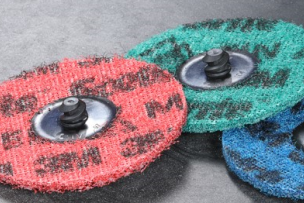Carrying more power to more people with lighter power lines. Keeping manufacturers on the cutting edge of competitiveness with abrasive solutions and surface modifying systems. Helping manufacturers make more with less through leaner processes. Automating health care data so the right people get the right information to take action. These are some of the ways we’re working to support stronger communities and sustainable development across the globe. We see the world's challenges clearly and unite the people that dare to solve them. We innovate with purpose and use science every day to create real impact in every life around the world.
Integrating automation into any industry brings challenges. For the metal fabrication and finishing field, automating an application like deburring has its own unique set of considerations.
Deburring is not an application that always looks and functions the same. It’s ambiguous, nuanced and often perceived as requiring the human touch of an operator. Sometimes, deburring is conducted on hulking objects like a ship hull, while other situations call for the deburring of small parts like orthopedic implants or turbine blades.
Addressing the Challenges of Robotic Deburring
At its most basic function, a robot is designed simply to reach a point in space. We see this in factory automation where repetitive motions like placing an object on a fixed-speed belt is performed by a robot arm that pivots and repeatedly bends over. It moves objects based on pre-determined coordinates, throughout a generally static process.
The challenges that come with integrating robots for applications like deburring include an abrasive’s tendency to wear down and change in size and performance over time. Robots that have highly fixed, programmatic movements cannot adjust to the wear of the abrasive—and, in most cases, robots cannot understand pressure or contact like operators who are trained to “feel” the job and adjust force as they go. Robotic integrators, however, are able to add devices with force control and feedback to robotic cells that are designed to compensate for these sensory shortcomings. So, the challenges facing automated deburring are not unsolvable.
When setting up robotic controls for a material removal abrasive process, 3M looks at several factors, including pressure. Ultimately, they’ve found the key to successful robotic deburring is to design robots with the ability to change their pressure throughout—because, controlled force yields consistent results.







Talk to Us!
Leave a reply
Your email address will not be published. Required fields are marked *